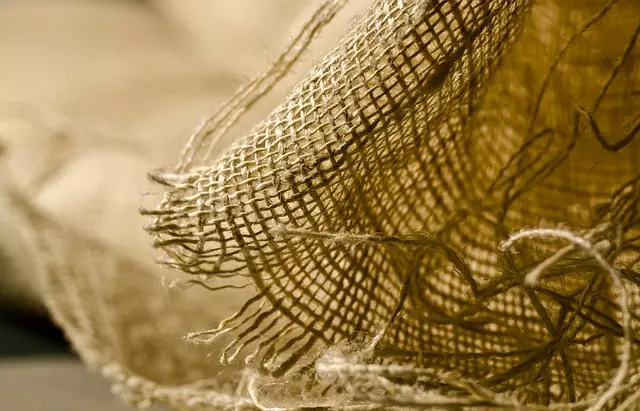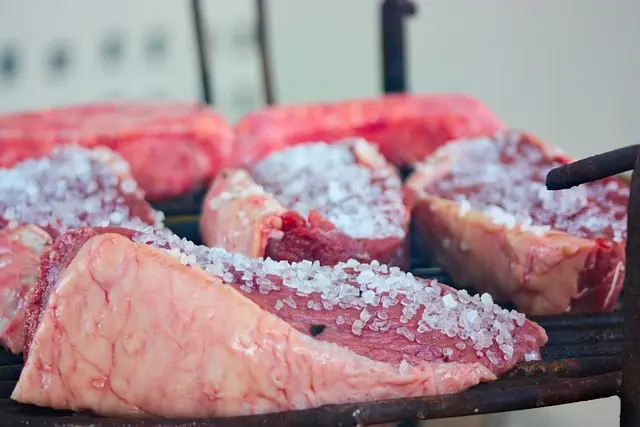Red Vein Maeng Da, a kratom strain with distinct red-veined leaves, has gained recognition for its potential to alleviate joint pain through its unique alkaloid profile, which includes 7-hydroxymitragynine and mitragynine. These compounds are thought to engage with opioid receptors for pain relief. While user experiences suggest its effectiveness, scientific research is still limited, emphasizing the need for more investigation. It's crucial for individuals to consult healthcare professionals before using Red Vein Maeng Da, considering its potential side effects, dependency risks, and the variable legal status across regions. Understanding what is Red Vein Maeng Da involves acknowledging its role as a natural analgesic alongside the importance of responsible use within a comprehensive treatment plan.
Red Vein Maeng Da emerges as a natural alternative for individuals seeking relief from joint pain. This article delves into the therapeutic potential of this botanical remedy, exploring its analgesic properties and practical application in pain management routines. Understanding what is red vein maeng da is crucial for those considering it as part of their wellness strategy. We will dissect the scientific rationale behind its effectiveness and provide a comprehensive guide on how to safely incorporate it into your regimen, along with discussing the pros and cons associated with its use. Join us as we navigate the intersection of traditional herbalism and modern pain relief solutions.
- Understanding Red Vein Maeng Da: A Natural Approach to Joint Pain Relief
- The Science Behind Red Vein Maeng Da and Its Analgesic Properties
- How Red Vein Maeng Da Can Be Integrated into Your Joint Pain Management Routine
- Dosage and Safety Considerations for Red Vein Maeng Da as a Joint Pain Remedy
- Exploring the Potential Benefits and Risks of Using Red Vein Maeng Da for Joint Pain Relief
Understanding Red Vein Maeng Da: A Natural Approach to Joint Pain Relief

Red Vein Maeng Da, a strain of the Mitragyna speciosa plant commonly known as kratom, has garnered attention in natural wellness circles for its potential benefits in managing joint pain. This specific variant is cultivated and dried differently than other kratom strains, which contributes to its unique alkaloid profile and effects. The leaves of Red Vein Maeng Da contain a blend of alkaloids, including 7-hydroxy mitragynine, which are believed to interact with the body’s opioid receptors, providing relief from chronic pain without the side effects associated with traditional pain medication. Users often report that Red Vein Maeng Da helps in alleviating joint discomfort, improving mobility, and enhancing overall comfort. It is important to note that while anecdotal evidence suggests its efficacy, scientific research is still emerging, and more studies are needed to fully understand its potential as a natural remedy for joint pain relief. Those considering Red Vein Maeng Da for pain management should consult with healthcare professionals to ensure safe and effective use, particularly given the regulatory status of kratom in various jurisdictions. Understanding the nuances of Red Vein Maeng Da and its role in joint pain relief can empower individuals to explore natural alternatives that may complement conventional treatments.
The Science Behind Red Vein Maeng Da and Its Analgesic Properties

Red Vein Maeng Da, a popular strain within the realm of kratom, has been widely recognized for its potential analgesic properties. The leaves of this particular strain exhibit red veins due to the fermentation process they undergo after being harvested, which can influence the alkaloid profile and subsequent effects. Scientifically speaking, Red Vein Maeng Da contains a complex blend of alkaloids, including 7-hydroxymitragynine and mitragynine, both of which are thought to contribute to its pain-relieving qualities. Research suggests that these compounds interact with opioid receptors in the brain, mimicking their effects without the same level of dependency or risk associated with traditional opioids. The analgesic efficacy of Red Vein Maeng Da may be attributed to this interaction, making it a subject of interest for those seeking natural alternatives for managing chronic pain. Users often report that this strain provides relief from various types of pain, including muscle aches, joint discomfort, and other forms of persistent soreness. As with any herbal supplement, it is crucial to consult healthcare professionals before incorporating Red Vein Maeng Da into one’s wellness regimen, especially considering the potential for interactions with other medications and individual differences in response to kratom. Understanding the science behind Red Vein Maeng Da’s analgesic properties is essential for those looking to explore its pain-relieving benefits.
How Red Vein Maeng Da Can Be Integrated into Your Joint Pain Management Routine

Red Vein Maeng Da, a strain derived from the Mitragyna speciosa tree, has garnered attention in natural health circles for its potential benefits in joint pain management. This particular variant of kratom is known for its distinctive red veins and is often sought after for its unique alkaloid profile that may contribute to its analgesic properties. Integrating Red Vein Maeng Da into a joint pain management routine involves a careful and consistent approach, as the effects of kratom can vary among individuals.
To incorporate Red Vein Maeng Da into your daily regimen, it is important to start with a modest dose to assess your body’s response. The alkaloids present in this strain, such as 7-hydroxymitragynine and mitragynine, are believed to interact with the opioid receptors in the brain, potentially providing relief from joint pain. Users often report that Red Vein Maeng Da can offer a balanced effect that is both soothing and invigorating, which may be particularly beneficial for those dealing with chronic joint discomfort. It’s advisable to consult with a healthcare professional before making any changes to your pain management strategy, especially if you are taking other medications or have underlying health conditions. Additionally, the consistency of dosage and timing can play a significant role in optimizing the effects for joint pain relief. Users may find that maintaining a regular intake schedule allows for more predictable and sustained comfort throughout the day.
Dosage and Safety Considerations for Red Vein Maeng Da as a Joint Pain Remedy

When considering Red Vein Maeng Da as a joint pain remedy, understanding the appropriate dosage and safety measures is paramount for effective relief without adverse effects. Red Vein Maeng Da, a strain of kratom known for its potential analgesic properties, can be an option for those seeking natural pain management. Typically, the recommended starting dose for Red Vein Maeng Da ranges from 2 to 6 grams orally, depending on the individual’s tolerance and pain severity. It’s advisable to begin with a lower dose and gradually increase as needed, while closely monitoring one’s response to gauge effectiveness and tolerability.
Safety considerations are non-negotiable when incorporating Red Vein Maeng Da into a joint pain management regimen. Users should be aware of the strain’s potential side effects, which may include nausea, constipation, and drowsiness. The risk of dependency and withdrawal also exists with long-term use, as it does with other opioid-like substances. It’s crucial to adhere to safe dosing guidelines to minimize these risks. Additionally, individuals with pre-existing health conditions or those taking prescription medications should consult a healthcare provider before using Red Vein Maeng Da, as it may interact with other substances. What is Red Vein Maeng Da? It is a kratom strain that has been used traditionally in Southeast Asia and more recently in the West for its pain-relieving and mood-enhancing effects. Users must approach its use with caution, respecting both the potential benefits and the necessity for further scientific research to fully understand its impact on joint pain relief.
Exploring the Potential Benefits and Risks of Using Red Vein Maeng Da for Joint Pain Relief

Red Vein Maeng Da, a strain of the Mitragyna speciosa plant commonly known as kratom, has garnered attention for its potential therapeutic properties, particularly in the realm of joint pain relief. This particular variant of kratom is distinguished by its unique alkaloid composition, which is thought to contribute to its analgesic effects. Users report that Red Vein Maeng Da may offer substantial relief from chronic joint pain due to its ability to interact with the body’s opioid receptors, providing a natural alternative to conventional pain medications. The strain’s efficacy in managing discomfort is attributed to its rich alkaloid profile, which includes 7-hydroxymitragynine and mitragynine, both of which have been studied for their pain-relieving qualities.
However, it is crucial to approach the use of Red Vein Maeng Da with caution. While the benefits are promising, the risks associated with its use should not be overlooked. Kratom’s interaction with various systems in the body can lead to side effects such as nausea, constipation, and potential dependency or tolerance issues over time. Additionally, the legal status of kratom varies by region, with some countries banning its use entirely due to its psychoactive properties and potential for abuse. Users considering Red Vein Maeng Da for joint pain relief should first consult with a healthcare provider to ensure safe usage, understand the potential risks, and explore alternative treatments that may complement or serve as a safer option for their condition. What is Red Vein Maeng Da becomes a question of both interest and importance for those seeking natural remedies for chronic pain, emphasizing the need for responsible exploration and evidence-based decision-making.
Red Vein Maeng Da has emerged as a promising natural alternative for those seeking joint pain relief. Its analgesic properties, rooted in alkaloids like 7-hydroxymitragynine, offer a potential avenue for managing discomfort without relying solely on pharmaceuticals. By understanding how to incorporate it into a daily routine and adhering to appropriate dosage guidelines, individuals may experience significant pain relief while considering both the potential benefits and the associated risks. It’s crucial to approach its use with caution and to consult healthcare professionals before incorporating Red Vein Maeng Da into your wellness regimen. What is Red Vein Maeng Da? It’s a strain of kratom, a plant native to Southeast Asia, whose leaves have been traditionally used for their pain-relieving properties. Today, it stands as a topic of growing interest and research within the realm of natural medicine, offering a comprehensive approach to joint pain management.






